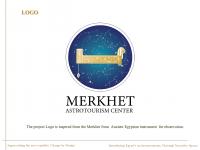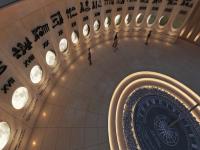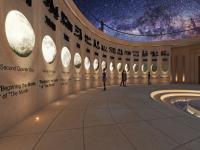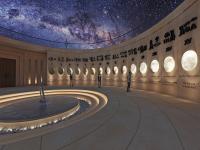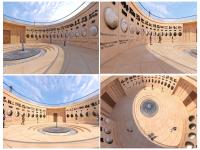Introduction:
Astro-tourism in Egypt is a dynamic development. Astro-tourism does not have the attention it deserves in Egypt. According to the United Nation's Sustainable Development Goals, this project's goal is to formulate a design program to raise awareness about the role of the Ancient Egyptians in archeoastronomy through interior design. showing the ideology and symbols of astronomy in the ancient Egyptian civilization for the interior design process. Analyzing the role of interior design in creating astronomy-inspired spaces to support Astro-tourism. These goals were achieved by employing a narrative design method, which was employed in order to develop and promote an understanding of Egyptian archeoastronomy through interior design. and attracting many visitors to understand Egyptian culture through various forms of entertainment.
Location:
New Aswan in Aswan, Egypt.
Project's Concept:
The concept is applied through The activities of the astro-tourism center include: an exhibition area showing the zodiac map of the stars, which depicts the 12 constellations of the zodiacal band, which creates 36 decans of ten days each, as well as the planets. These decans are groups of stars of the first magnitude. The ancient Egyptian calendar, which was based on 30-day lunar cycles and the heliacal rising of stars, used these. and a day and night area. The earliest sort of timekeeper used by the ancient Egyptians was a sundial, which determines the time of day by observing the position of an object's shadow cast by the sun. The sun moves across the sky as the day goes on, shifting the object's shadow and signaling the passage of time. A sundial's time may be read pretty simply. In direct sunlight, the sundial's gnomon casts a distinct shadow that indicates the time. In ancient Egyptian culture, each day had its own story, which was shown at night by pharaonic symbols that showed the 30-day moon cycles.
SDGs that the project supports:
G4: Quality Education: Preserve cultural variety and the role of culture in sustainable development by ensuring all learners have the information and skills needed to support sustainable development
G8: Decent Work and Economic Growth: Devise and implement policies to promote sustainable tourism that creates jobs and promotes local culture and products.
Project’s Aims:
- Formulate design program to raise the awareness about the role of Ancient Egyptians in archeoastronomy through interior design.
- Studying the ideology & symbols of astronomy in the ancient Egyptian’s civilization for the interior design process.
- Analyzing the role of interior design in creating astronomy inspired spaces to supports Astrotourism.
2022
2022
TECHNICAL DATA Systems:
- HVAC SYSTEM
- Fiber optic
- Interactive screens
- Touch screens
Sustainability
- Natural lighting
- Natural ventilation
- Use of local materials (surrounding materials) Used Egyptian pharoanic material such as limestone, palm tree, Sandstone, Alabaster and brass
Activities & Zones:
- Entrance
- Exhibition
- Reception
- Restaurant
- Administration
- Sundial clock area
- Media center
- Research lab
- Events area
- Lecture room
- Gift shop
PROJECT TEAM
Project designed and presented by: Radwa Abdelaziz Shalaby
-Faculty of Arts & Design - Interior Department - MSA University -
Under the supervision of:
-Assoc. Prof. Dr. Rasha El Zeiny,
-Assoc. Prof. Dr. Hoda Madkor
-Assoc. Prof. Dr. Dalia Ezzat
-Assoc. Prof. Dr. Ola Hashem
-Assoc. Prof. Dr. Ahmed Abdelhalim Salama
-LA.Tarek Fouad
Voted 0 times



